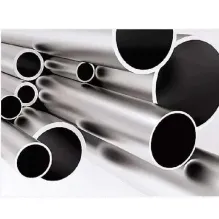-
Cangzhou Yulong Steel Co., Ltd.
-
Phone:
+86 13303177267 -
Email:
admin@ylsteelfittings.com
- English
- Arabic
- Italian
- Spanish
- Portuguese
- German
- kazakh
- Persian
- Greek
- French
- Russian
- Polish
- Thai
- Indonesian
- Vietnamese
- Zulu
- Korean
- Uzbek
- Hindi
- Serbian
- Malay
- Ukrainian
- Gujarati
- Haitian Creole
- hausa
- hawaiian
- Hebrew
- Miao
- Hungarian
- Icelandic
- igbo
- irish
- Japanese
- Javanese
- Kannada
- Khmer
- Rwandese
- Afrikaans
- Albanian
- Amharic
- Armenian
- Azerbaijani
- Basque
- Belarusian
- Bengali
- Bosnian
- Bulgarian
- Catalan
- Cebuano
- China
- China (Taiwan)
- Corsican
- Croatian
- Czech
- Danish
- Esperanto
- Estonian
- Finnish
- Frisian
- Galician
- Georgian
- Kurdish
- Kyrgyz
- Lao
- Latin
- Latvian
- Lithuanian
- Luxembourgish
- Macedonian
- Malgashi
- Malayalam
- Maltese
- Maori
- Marathi
- Mongolian
- Myanmar
- Nepali
- Norwegian
- Norwegian
- Occitan
- Pashto
- Dutch
- Punjabi
- Romanian
- Samoan
- Scottish Gaelic
- Sesotho
- Shona
- Sindhi
- Sinhala
- Slovak
- Slovenian
- Somali
- Sundanese
- Swahili
- Swedish
- Tagalog
- Tajik
- Tamil
- Tatar
- Telugu
- Turkish
- Turkmen
- Urdu
- Uighur
- Welsh
- Bantu
- Yiddish
- Yoruba

Nov . 04, 2024 15:09 Back to list
Exploring ANSI Standards for 300 lbs Load Capacity Applications and Safety Measures
The Significance of ANSI 300 lbs Understanding the Standards
The American National Standards Institute (ANSI) plays a crucial role in establishing norms and guidelines that enhance safety, interoperability, and quality across various industries. One such standard is ANSI 300 lbs, which refers to a specific pressure class rating commonly used in piping systems, particularly those associated with chemical processing, oil and gas industries, and water treatment facilities. Understanding ANSI 300 lbs is essential for engineers, project managers, and safety officers involved in the design, construction, and maintenance of high-pressure systems.
At its core, the ANSI 300 lbs specification denotes the maximum pressure that a flange can withstand at a specified temperature, making it a critical factor in the selection of the right components for a given application. Typically, ANSI classes range from 150 lbs to 2500 lbs, with higher numbers indicating a greater pressure rating. The ANSI 300 lbs category indicates that these flanges can sustain a pressure of up to 300 pounds per square inch (psi) at a standard temperature.
The Significance of ANSI 300 lbs Understanding the Standards
Safety is a paramount concern when dealing with high-pressure systems. The ANSI 300 lbs standard significantly contributes to the prevention of accidents and catastrophic failures. By adhering to this standard, engineers can ensure that the components they select will not only perform well under pressure but also comply with safety regulations. This compliance mitigates risks associated with leaks, ruptures, and other failures which can lead to environmental disasters, significant economic loss, or even loss of life.
ansi 300 lbs

Installation and maintenance practices also benefit from the ANSI 300 lbs classification. The standardization of sizes and dimensions facilitates easier installation, as components can be manufactured to meet predefined metrics. This uniformity reduces the possibility of human error during assembly and ensures that the components fit optimally. Furthermore, regular inspection and maintenance procedures can be streamlined due to a common understanding of the pressure ratings, which makes it easier for technicians and engineers to identify potential issues before they escalate.
In addition to safety and practicality, ANSI 300 lbs also addresses the economic aspect of project management. Although flanges and fittings conforming to this standard may have a higher upfront cost compared to lower-rated components, the long-term benefits become evident through reduced maintenance costs, fewer replacements, and, importantly, decreased downtime. The initial investment pays off as the systems run efficiently and reliably over time.
Additionally, as industries grow more interconnected globally, compliance with ANSI standards becomes vital for international trade. Manufacturers and suppliers who adhere to ANSI 300 lbs can engage more readily in cross-border projects, fostering collaboration and boosting business opportunities. Global adherence to such standards is instrumental in creating a unified framework that promotes safety and quality assurance across the board.
In conclusion, ANSI 300 lbs serves as a vital standard that encapsulates safety, durability, and efficiency in high-pressure piping systems. Its significance extends beyond individual projects into broader applications across industries, promoting reliable operations and regulatory compliance. By understanding and implementing ANSI 300 lbs standards, companies can not only protect their valuable assets but also pave the way for sustainable growth in a highly competitive marketplace.
Latest news
-
ANSI 150P SS304 SO FLANGE
NewsFeb.14,2025
-
ASTM A333GR6 STEEL PIPE
NewsJan.20,2025
-
ANSI B16.5 WELDING NECK FLANGE
NewsJan.15,2026
-
ANSI B16.5 SLIP-ON FLANGE
NewsApr.19,2024
-
SABS 1123 FLANGE
NewsJan.15,2025
-
DIN86044 PLATE FLANGE
NewsApr.19,2024
-
DIN2527 BLIND FLANGE
NewsApr.12,2024
-
JIS B2311 Butt-Welding Fittings LR/SR 45°/90° /180°Seamless/Weld
NewsApr.23,2024











